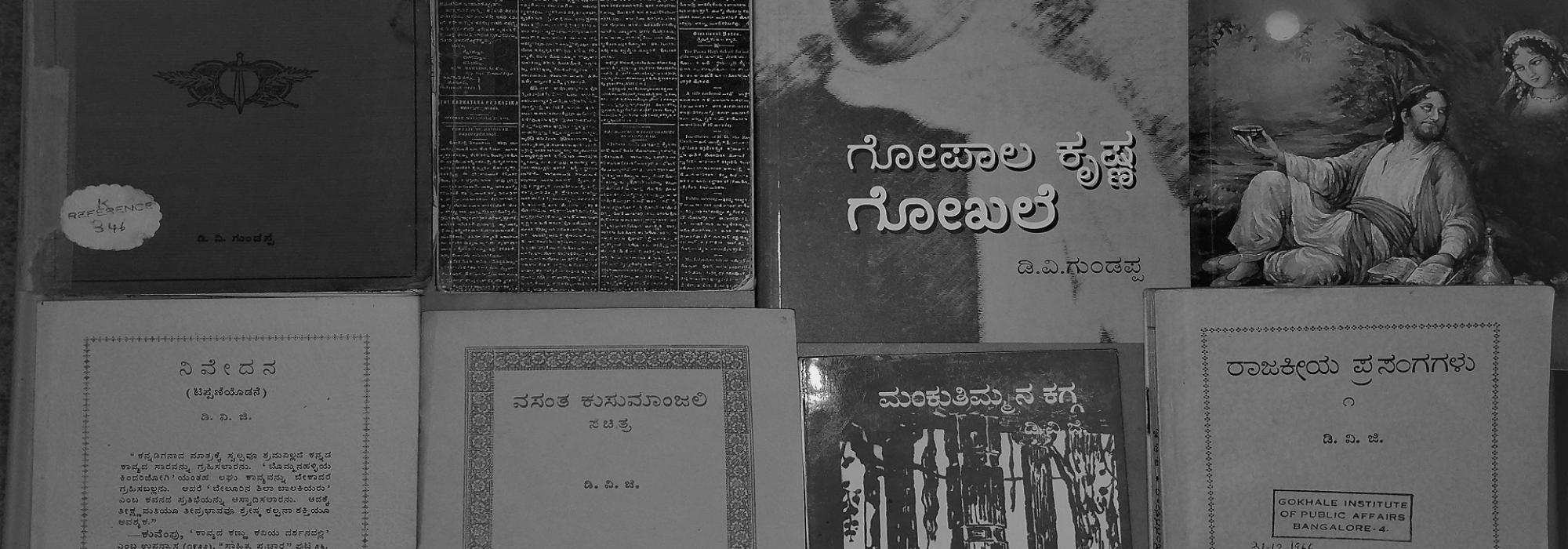Note: This is the full text of a lecture delivered at the Gokhale Institute of Public Affairs as part of its lecture series titled Exemplars of Indian Wisdom from Karnataka jointly organized by Prekshaa Pratishthana.
***
To begin with I’d like to recall a very famous maxim. It is said that pride and honour cannot coexist but today, it definitely coexists. Indeed, it is both my pride and honour to speak in this hallowed venue of the Gokhale Institute of Public Affairs (GIPA) about Sri D.V. Gundappa. It is a venue founded and sanctified by DVG himself. Thanks once again to GIPA, Prekshaa, and especially to Dr. S.R. Ramaswamy and Shatavadhani Dr Ganesh for conceiving this brilliant and much-needed series on the exemplars of Indian wisdom from Karnataka.
But before we can get to the actual topic, I think the briefest survey of the context is essential. In the previous episodes of this series, both DR. Ramaswamy and Hari Ravikumar have brilliantly set the backdrop for the exemplars of Indian Renaissance, so I will just add a few words here.
Beginning with the second half of the 19th century, for roughly the next hundred years, a gradual, steady and in many cases, irreversible transformation occurred in India. The latter fifty years of that century transformed India and specifically, the Hindu society and culture in a manner and at a pace never witnessed in the preceding thousand years. In fact, the Indian freedom struggle, which eventually became a mass movement, was only the political face of a deeper and far more profound struggle. This struggle was the struggle to recover the battered, bruised and wounded ethos of the ancient Indian civilization, which had attracted the entire world continuously for more than 2000 years as the global hub of education and culture and wealth.
The same period—i.e. from the mid 19th century to 1947, also witnessed the birth of an entirely new class of extraordinary intellectuals, thinkers, philosophers, spiritual masters, writers, artists, scholars, statesmen, and it simultaneously transformed our business class as well. This class began to chart a completely new process and a journey of re-evaluating and rediscovering its own roots using the tools introduced by the British, and the West, broadly speaking. Gradually, as more and more Indians began traveling to Europe, they got a first-hand experience of the society and other conditions out there, and were able to make comparative analyses with the Indian condition. One major finding was that the so-called “modern” and “progressive” British society was after all, not so progressive—the 19th and early 20th century British society was a deeply status-conscious society and London for example, was notorious for rampant teenage prostitution. Armed with these findings, this new class of the exemplars of Indian wisdom began broadcasting these foreign truths to their own countrymen.
The result was nothing short of an all-encompassing explosion of civilizational reawakening and cultural revival helmed by the brightest minds endowed with the most compassionate hearts that beat and bled for Bharatavarsha. This I think is a one-line description of the life and legacy of the exemplars of the modern Indian Renaissance.
Small wonder that these exemplars were household names in their own time across Bharatavarsha. For example, Jadunath Sarkar was primarily a scholar of history but he was also a household name because he was something far higher and profounder than a mere historian.
In a nutshell, these exemplars were real luminaries in the sense that they exuded a light which re-cultured the entire Indian society—both in parts and the whole. The other great feature of these stalwarts was the fact that they knew one another, appreciated each other’s good work, and actively sought out each other... what bound them all together was Bharatiya culture.
But at this distance in time, our tragedy is that barring a handful of people in the entire country… such as Dr. S.R. Ramaswamy and Shatavadhani Dr Ganesh, where are such luminaries today? And why is our country unable to produce such stalwarts anymore? This point I think is what makes events such as this series more urgent, and infinitely relevant and timely. Those exemplars of Indian wisdom have been replaced today by that ultimate vulgarity: celebrity. If a Latin corruption can be coined, the current phenomenon can be called, celebritus vulgaris.
***
To begin my submission, I think it is befitting to invoke Dr. Ramaswamy’s memorable one line description of DVG: ಡಿವಿಜಿ ಅವರ ಸಹವಾಸ ಸಂಸ್ಕಾರಕಾರಿ: the mere company of DVG cultures and refines. In fact, I can finish my entire submission today with just this quote.
***
Without making comparisons to anyone else, the one remarkable and perhaps unique feature of DVG’s distinction as an exemplar of Indian wisdom is the manner in which the people of Karnataka have owned him unconditionally because he was the physician who healed the souls of three generations while he was alive, and his legacy still retains the same therapeutic power. In this light, I find it difficult as to how to interpret the honorary doctorate that the Government awarded to this physician.
Throughout his life, DVG identified himself only as a journalist, which was entirely consistent with the natural tenor of his humility. However, he was not only a journalist, but an editor, chronicler, biographer, poet, dramatist, intellectual, litterateur, critic, scholar, philosopher, preceptor, statesman, legislator and freedom fighter. Above all, he was a selfless and honest witness of his tumultuous era: a witness who was also an intense participant who left behind the primary sources that enable us today, to accurately reconstruct the history of almost a century. Indeed, DVG was himself a primary source.
These are some of the facets of his all-encompassing legacy that we can examine during the course of this lecture.
To be continued













































